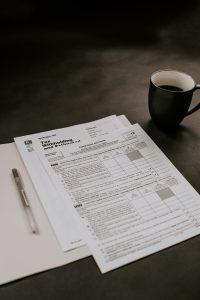The foreign exchange market, commonly known as forex, is a global market where currencies are traded 24 hours a day, 5 days a week. The forex market is the most liquid and largest financial market in the world, with an average daily trading volume of over $5 trillion. Forex traders aim to profit from the fluctuations in exchange rates by buying low and selling high. One of the key factors that influence the forex market is supply and demand. Understanding how to identify supply and demand in forex can help traders make better trading decisions and enhance their profitability.
Supply and demand in forex refer to the relationship between the amount of currency being offered for sale and the amount that buyers are willing to purchase at a specific price. When the supply of a currency exceeds the demand, the price of that currency will typically decrease, and when the demand exceeds supply, the price of that currency will typically increase. Identifying supply and demand in forex involves analyzing price charts and looking for patterns that indicate the imbalance between supply and demand.
One of the most popular tools for identifying supply and demand in forex is price action analysis. Price action analysis involves analyzing the movement of price on a chart without using any indicators or other technical analysis tools. By observing the price movement, traders can identify key levels of support and resistance, which are levels where the price tends to reverse direction.
Support and resistance levels are areas on a price chart where the price of an asset tends to stall or reverse direction. Support levels are areas where the price tends to find support and bounce back up, while resistance levels are areas where the price tends to find resistance and move back down. These levels can be identified by looking for previous highs and lows on the price chart.
Once support and resistance levels have been identified, traders can use them to identify supply and demand zones. A supply zone is an area on the chart where the price tends to find resistance and move back down, while a demand zone is an area where the price tends to find support and move back up. These zones can be identified by looking for areas where the price has previously stalled or reversed direction.
Another tool that traders can use to identify supply and demand in forex is volume analysis. Volume refers to the number of transactions that occur in the market at a specific time. When the volume is high, it indicates that there is a lot of buying and selling activity in the market, which can indicate a shift in supply and demand.
Traders can use volume analysis to identify areas on the chart where there is a significant increase or decrease in volume. When there is a significant increase in volume in an uptrend, it can indicate that buyers are entering the market and that the demand is increasing. Conversely, when there is a significant increase in volume in a downtrend, it can indicate that sellers are entering the market and that the supply is increasing.
In addition to price action and volume analysis, traders can also use indicators to identify supply and demand in forex. One popular indicator is the relative strength index (RSI), which measures the strength of a trend and can be used to identify overbought and oversold conditions. When the RSI is above 70, it indicates that the market is overbought, and when it is below 30, it indicates that the market is oversold.
Traders can use the RSI to identify areas on the chart where the market is overbought or oversold, which can indicate a potential shift in supply and demand. When the market is overbought, it can indicate that the demand is high, and when it is oversold, it can indicate that the supply is high.
In conclusion, identifying supply and demand in forex is an essential skill for traders who want to profit from the fluctuations in exchange rates. Traders can use a variety of tools and techniques, including price action analysis, volume analysis, and indicators, to identify key levels of support and resistance, as well as supply and demand zones. By understanding how to identify supply and demand in forex, traders can make better trading decisions and improve their profitability.






